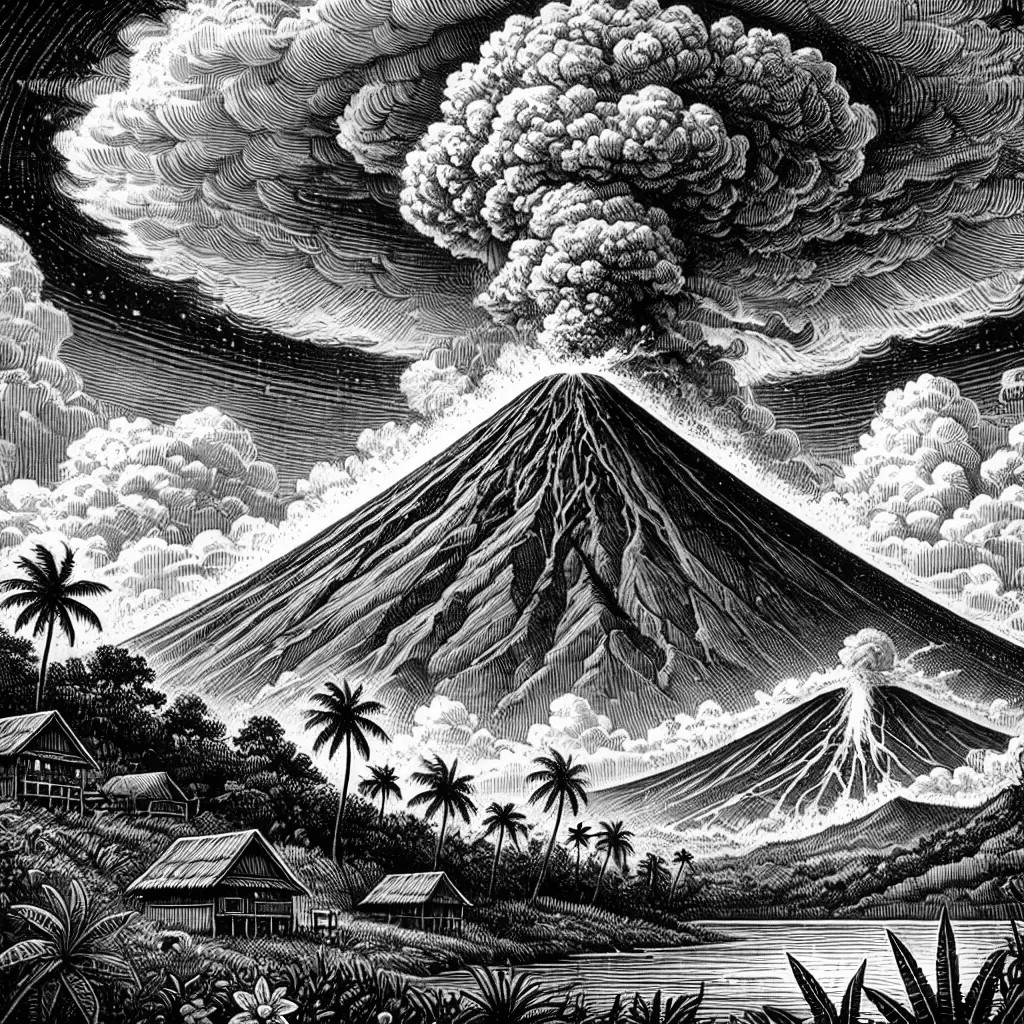Lesson made on June 14, 2023
Download Printable Lesson (PDF)
Download Printable Answer Key (PDF)
Reading Lesson:
In the Philippines, about 13,000 people had to leave their homes because the famous Mayon volcano started to spew lava. People who lived within a dangerous area around the volcano were taken to safe places, some in trucks and some on buffalo-pulled carts.
Mayon began showing signs of an eruption last week. More and more people might need to move to safety if the volcano becomes more active. Right now, the alert level is quite high. This means that scientists think there could be a big eruption soon. The volcano is slowly releasing lava right now.
Volcanoes can be dangerous because they can release a quick-moving flow of gas and rocks that are hard to escape from. In the past, eruptions from Mayon have caused lots of harm. An eruption in 1814 killed 1,200 people and covered a whole town. But because people aren’t allowed to live too close to the volcano anymore, fewer people were hurt during eruptions in 2013 and 2018.
Even though it’s dangerous, many people are excited to see the volcano. Some are even camping on nearby hills to watch it. Officials have even set up places where people can safely watch the volcano. The Mayon volcano is a big part of Filipino culture. It’s even named after a word that means ‘beautiful lady.’
The Philippines has 24 active volcanoes and two others are also being watched closely right now. Although recent eruptions didn’t cause many deaths, typhoons can cause deadly flows of mud and volcanic rocks. This past weekend, thankfully, a strong storm from the Pacific Ocean missed the area around the Mayon volcano.
Comprehension Questions:
Speaking and Writing Activities:
– Discuss these questions with a partner or a small group.
– Choose one topic and write a response to it. Show your writing to a classmate or teacher.
1. The article mentions that people are camping on nearby hills to watch the volcano. What are your thoughts on this?
2. What are the most common natural disasters where you live? If you had to evacuate, what would you do?
3. Describe a famous natural landmark in the country you’re from.
More Reading Practice:
What is Mayon Volcano?
The Mayon Volcano is one of the most significant natural features in the Philippines. Located in the province of Albay in Bicol Region, it is over 2400 meters above sea level. It’s famous not just for its impressive height, but also for its almost perfect cone shape, making it one of the most symmetrical volcanic cones in the world.
Volcanoes are categorized based on their level of activity. The Mayon Volcano is an active stratovolcano, which means it is built up by many layers (strata) of hardened lava, volcanic rocks, and volcanic ash. Unlike other volcano types, stratovolcanoes are quite steep and can have periodic, explosive eruptions.
The word “active” in the context of volcanoes implies that it has erupted in recent history and is likely to erupt again. Mayon Volcano has erupted around 50 times in the past 500 years. Its most recent major eruption was in 2018, which forced tens of thousands of people to evacuate their homes for safety.
Despite the potential danger, the area around Mayon Volcano is quite populated. That’s because volcanic soils are extremely fertile, making them great for agriculture. Many people grow crops like coconuts, abaca, and rice on the land around the volcano.
But this doesn’t mean people take the volcano’s threat lightly. The Philippine Institute of Volcanology and Seismology continually monitors the volcano’s activity. They use sophisticated equipment to keep track of seismic activity, ground deformation, gas output, and other factors. This allows them to predict potential eruptions and warn residents in advance, helping to save lives.
While the Mayon Volcano may pose a risk due to its activity, it is also a source of awe and wonder. Its almost perfect symmetrical shape and the rich, green landscape surrounding it make it a significant attraction for tourists and photographers worldwide.
Where are most active volcanoes located?
Active volcanoes can be found in various parts of the world, but the most significant concentration of them is located in a region we call the “Ring of Fire.” This fascinating name might make you think of an enormous blazing circle, and in some ways, that’s not too far off. However, this ring is not made of flames, but instead a huge chain of active volcanoes and earthquake-prone areas.
This remarkable “Ring” stretches about 40,000 kilometers, forming a sort of horseshoe shape. It traces the borders of the Pacific Ocean, touching multiple continents like North America, South America, and Asia, and also includes several island nations, such as Japan and the Philippines.
Why does the Ring of Fire have so many active volcanoes? The reason lies beneath the surface of the Earth. Here, enormous slabs of rock, known as tectonic plates, are constantly shifting and interacting with each other. The Ring of Fire is especially active because it’s where many of these plates come together. When one plate slides beneath another (a process called subduction), the lower plate melts due to the high temperature and pressure deep within the Earth. This melting rock, or magma, can then rise to the surface and cause a volcanic eruption.
Indonesia is known for its active volcanoes, more so than any other country, with over 130 active ones. Another country with a high number of active volcanoes is Japan, with more than 110. The United States, particularly the state of Alaska, is also home to many active volcanoes, but not all of them are as active as the ones in Indonesia and Japan.
Link: Photos of Mayon Volcano
Link: Map of currently erupting volcanoes
Link: PHIVOLCS: Philippine Institute of Volcanology and Seismology
ESL lesson about a Japanese manga that many believe can predict earthquakes

